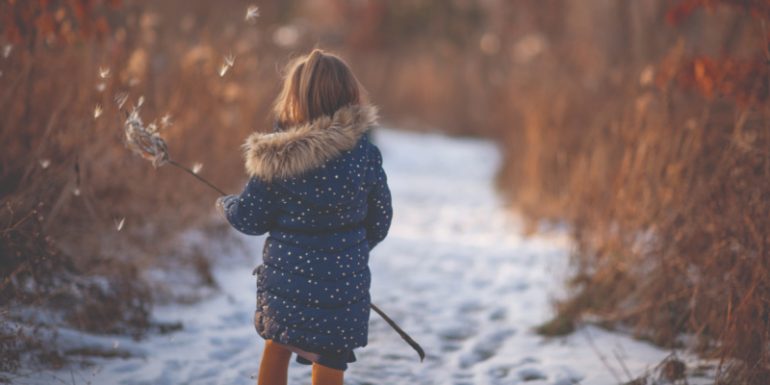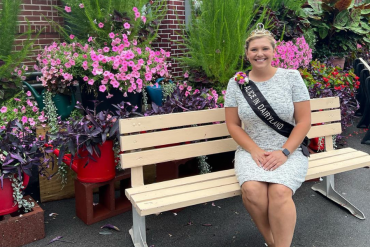By James E. Killian & Jen Schildgen
Eight years ago, Williams Bay resident James E. Killian retired from a career in healthcare administration and turned his attention to helping his community. Soon he was elected as a trustee to the Williams Bay Village Board and assigned the task of working as a liaison to Kishwauketoe Nature Conservancy (KNC), established in 1990 by former Village President and current KNC Board Chairman Harold Friestad, to whom the book is dedicated. Before long, Killian was a regular volunteer and then a Kishwauketoe Board Member.
In this role, he recognized the need for a comprehensive history of the Conservancy. In 2018, Killian enlisted the assistance of Jen Schildgen, a professional photographer and graphic designer with a deep love for Kishwauketoe, and together they began compiling the Conservancy’s history and story through archival research, interviews, photographs, maps and artwork. The result of this collaboration is “Kishwauketoe: A Nature Conservancy for the Children of Tomorrow,” a 256-page, full- color coffee table book, available for purchase through the Friends of Kishwauketoe. As of press time, the books have not been shipped from the printer. Visit friendsofknc.org for updates on availability.
At the Lake is pleased to present excerpts from the new book “Kishwauketoe: A Nature Conservancy for the Children of Tomorrow,” detailing the history, mission and vision of this privately funded, 231- acre nature preserve in Williams Bay.
FOR THE CHILDREN OF TOMORROW
Excerpted from Chapter 12, pages 247-253
“We seem to understand the value of oil, timber, minerals, and housing, but not the value of unspoiled beauty, wildlife, solitude, and spiritual renewal.”
– Bill Watterson, via Calvin of “Calvin and Hobbes”
Undeniably, Kishwauketoe’s history is vast and intriguing, far beyond our humble written record here. Setting down these pages, and stepping foot into the park from the Route 67 entrance, one begins to sense the whispers of the past with each breath of fresh air. What feet hugged this earth a week passed? (Ten years passed, ten decades?) Who called this land home, searched these marshes for food, slept beneath these trees, casting similar questions about the future into the starry night sky?
Turning left towards the humble banks of Southwick Creek, leaves of towering cottonwoods shiver on the breeze, a reminder that it often takes a quiet mind to hear what wisdom nature seeks to whisper. Heading north along Southwick Creek Trail, lush, early summer foliage folds in, creating a gentle tunnel, filled with the subtle song of red-wing blackbirds and the playful chirping of squirrels and chipmunks alike. At each level, the forest reveals new inhabitants, all relishing in the beautifully balanced form and function of their natural home.
At dusk, a raccoon scurries hurriedly up to nest, frightened by the soft crunch of approaching footsteps. A snapping turtle makes his way towards the warmth of the creekside and a late night meal. At dawn, twin fawns frolick clumsily through the underbrush, stretching their new legs not far from their mother’s watchful gaze.
Centuries ago, much was different here. Yet, in the lives of Kishwauketoe’s true residents, much remains the same. It is our presence that has shifted around them — at times offering a symbiotic bond, other times, threatening to encroach upon their very existence. When we pause long enough amidst the elderberry and cattails that line the northern boardwalk, we have the opportunity to see first hand how our paths are literally entwined.
The healthier this land is, the healthier its inhabitants and visitors become.
Working eastward towards the North Prairie and the Woodlands, a maze of native shrubbery gives way to rolling hills of big bluestem grasses, undulating like waves in the wind. And as we imagine those venerable civilizations that came so long before us, it behooves us to ask, what more can this land teach us, beyond the wisdom of hard learned lessons from the past?
As the grasses of the North Prairie yield to ancient oaks, stretching their great limbs towards the flowering meadow below, an answer begins to take shape. Just as the quiet decay of leaves and carbon feed these gentle giants, they breathe oxygen into our waiting lungs. Just as the fieldmouse feeds the eager adolescent bald eagle above. We are all in the midst of the greatest circle ever known. Our fates are woven together; our futures, our past.
Tree swallows dance below, swooping elegantly, all speed and grace. Their iridescent blue feathers glint briefly in the sunlight. Time stands still.
If you’re lucky, walking back across the prairie, you may hear the call of a resident pair of sandhill cranes, signaling to this year’s colt that he should stay near, lest this newest passerby poses some threat. Warily, they will watch you, and if you move slowly, with grace and respect, they may stay, sharing with you their feeding grounds — trusting that there is more than enough in the way of snails, snakes, and seeds in this fertile land to support your brief intrusion. Afterall, they too are just seasonal residents here. Having danced, mated, nurtured, and dined, they will fly south, towards temperate Florida, once the October frost kisses a cold goodnight to their hunting grounds.
Past the arboretum, up the Railroad Trail, where the pokeweed grows, fields of orange jewelweed wait, ready to enchant your senses, and ease your mosquito-bitten skin. Surely, there are some small discomforts to be found here. But overcoming our fear of the spider as she weaves her story into nightly webs, means being able to finally experience the startling beauty of dew drops on silvery strands.
What a grand and expansive place to wander as a child. To grow tall year by year, visiting an oak planted with family and friends.
To practice rewilding, taking to heart the art of imagining, and learning firsthand the careful quiet that signals the natural still before a storm.
These gifts are given, over and over, without want of thanks, or expectation to the children of Williams Bay. Unassumingly, the land teaches us truths long forgotten. It reminds us of our tender roots, and grounds us to the wisdom of the Earth.
In the midst of our man-made chaos and constant striving for more, better, faster, stronger, the land urges us to breathe. To trust. To know that we are connected, already, to something far greater than we can forge from steel or cement.
This is the legacy of Kishwauketoe. To instill, with unwavering patience and subtle grace, the knowledge that we are now, and forever will be, a part of nature. We watch over this land so that the children of tomorrow may always remember to hold dear the values of solitude, imagination, exploration, and connection: so that they may steer clear of the mistakes of our past, and look to nature to understand the delicate balance of respect which is vital to the survival and thriving of all.





